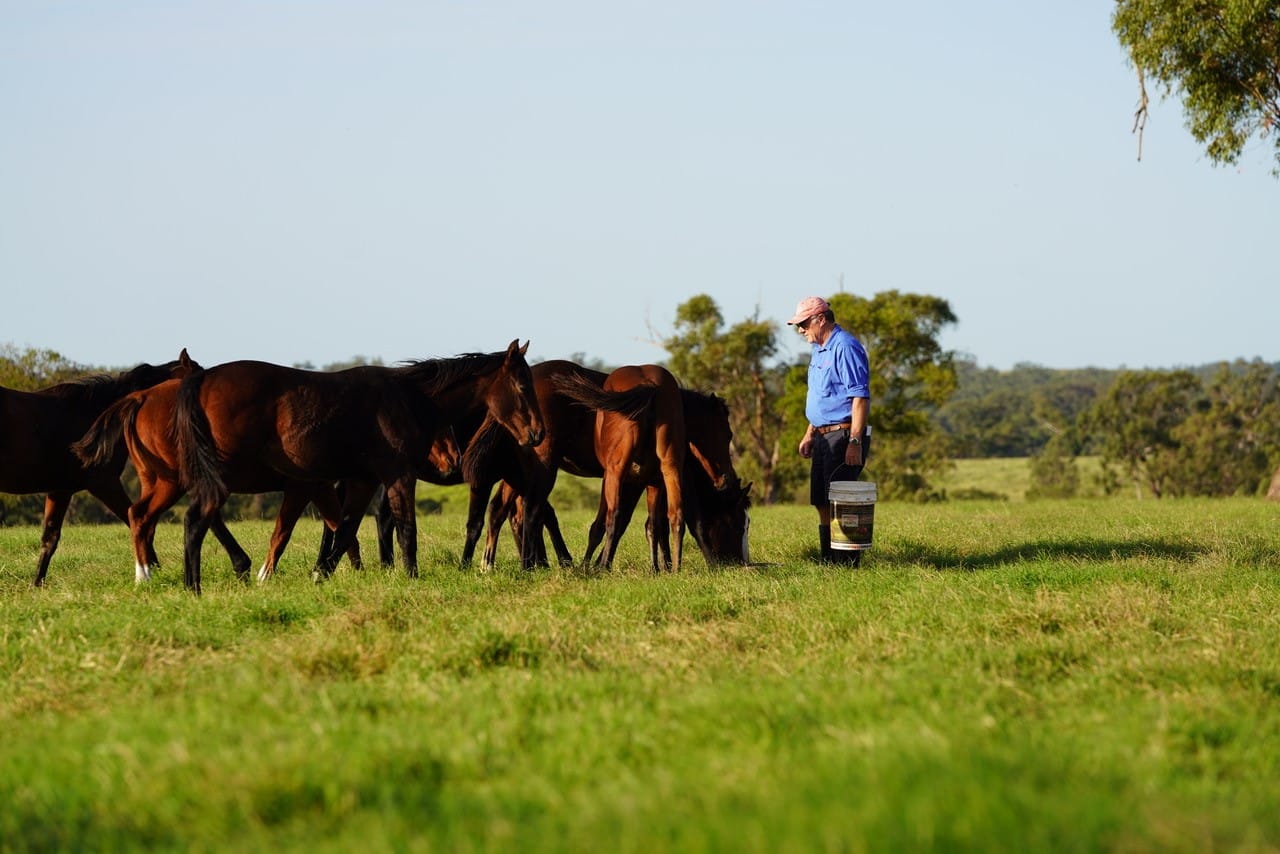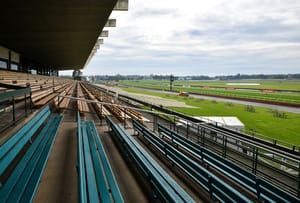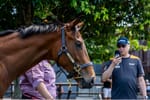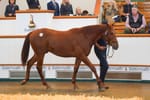This article is from the Inglis 2024 Preview Magazine. Click to read the full publication.
Racing runs on luck but the biggest punts in the game have nothing to do with betting slips. The Mitchell family’s breeding empire at Yarraman Park comes from three winning moves made far from the track.
The first was coming to Australia at all. If Major James Mitchell hadn’t rolled the dice, his descendants might still have been farming in England.
The second: buying one of the most productive broodmares of her generation.
Third, of course, was guessing that a fast entire with star looks but only minor black type wins would be more than just another handsome dud at stud.
This story starts in the mid-1960s. Major Mitchell, a World War II veteran, was restless after years of farming in Norfolk.
He reckoned UK farmland was overpriced compared with Australian properties. As a lifelong amateur horseman who dabbled in the odd galloper, he decided he wanted to raise thoroughbreds instead of running a mixed cropping farm.
The Major came to Australia with a British bloodstock agent, George Blackwell, who’d befriended another George — Moore, the champion Australian jockey who’d won England and Europe’s biggest races.
Moore had bought Yarraman Park at his peak; cashed up from piloting the great Tulloch to a string of big wins. He’d poured money into making a picture-book stud but couldn’t find stallions to match his ambition. By the time Blackwell brought Major Mitchell to stay at Yarraman while they looked at Hunter Valley properties, Moore was tiring of it.
Mitchell fell for Yarraman’s 3500 acres of rolling, naturally-drained paddocks spanned by miles of white fences, close to Scone. He told Moore he wanted the final offer if Moore ever decided to sell.
Moore promised and they did the deal in late 1968. In early 1969, Bunty Mitchell and her three boys, Arthur, Bill and Harry, joined the Major at their new home, Yarraman Park.
Decades earlier, the Widden Valley Thompsons had owned Yarraman, breeding the champion Eurythmic there in 1916. Since then, the property had changed hands and been used mostly to graze stock.
Moore had stood a couple of average stallions and also ran cattle and sheep. Major Mitchell adopted his “scroll over J” brand. In 1968 it was used more on cows than on horses, but it has since become one of the bestknown bloodstock brands in the business.
In 1968 when Major "James" Mitchell & his wife - Bunty - first bought Yarraman Park off George Moore - he would of only dreamed of standing a Champion Sire of Australia. In the year of 2022 - this dream came true!
— Yarraman Park Stud (@yarramanpark) August 8, 2022
Complete video: https://t.co/fjsVKWAwkW@anz_news @TDNAusNZ pic.twitter.com/vl4azEG8Ln
As the Mitchells often say, it has taken them 50 years to be an overnight success. The “new” Yarraman Park started with an English farmer nursing a dream, became a middling boutique stud catering mostly to hobby breeders, and got two huge boosts early in the new century.
By then, Major Mitchell was in his 80s. Arthur and Harry had long since taken the reins. Middle brother Bill had been training successfully, finishing with 11 G1 wins.
In early 2003, young bloodstock agent Damon Gabbedy called with a tip: they could buy a young mare named Oceanfast, in foal to King Charlemagne. They got her for around $100,000. Luck’s a fortune. By year’s end, Oceanfast’s yearling filly turned into Alinghi, destined to be the best sprinting filly of her time. The Mitchell’s didn’t need to own Alinghi to win every time she did.
They sold yearlings out of Oceanfast through Inglis Sales for a total of $7.61 million, headed by an Encosta de Lago filly at the Easter Yearling Sale for an as yet unbeaten record price for a filly of $2,600,000, then sold the mare herself for $700,000 at the Inglis Australian Broodmare Sale.
They dominated the Inglis Easter sales with an Australian record-priced colt and record-priced filly. Suddenly, if you don’t count the previous 40 years, they were in the big league.
“She really got us rolling,” says Harry of Oceanfast. “We paid the mortgage and it put us on a better footing.”
Arthur summed it up with no pretension. “There was nothing scientific to it — no genius involved. We just got lucky. I could list 25 other broodmare buys that haven’t turned out as well.”
“She really got us rolling. We paid the mortgage and it put us on a better footing.” - Harry Mitchell on Oceanfast
Still, that didn’t stop them spending on a better band of broodmares, an investment still paying dividends.
The Alinghi bubble came at the perfect time.
At that stage, the Mitchells had a handy stallion in Catbird, the 1999 Golden Slipper winner. He was shaping as above average but as he hit his prime in 2007, he succumbed to laminitis.
They also stood Magic Albert, a crack sprinter whose failure to win a G1 made him affordable. Despite not getting the best mares, he threw five G1 winners (and 24 Stakes winners) among 663 individual winners and progeny earnings in excess of $58 million.
Before Catbird and Magic Albert, Yarraman had plenty of flops. Early on, the Major had favoured second-tier imports, mostly stoutly bred handicappers.
That old world attitude clashed with a local racing scene in which the Golden Slipper exemplified the idea of breeding for speed. The dominance of emerging “colonial” sprint bloodlines reflected where the fast bucks were.
Yarraman’s early days of obscure stallions included Memento, Rutland, Straight Master and Sirocco. In the 1970s and 1980s, the Mitchells often hoped for good rain and high cattle prices. Dour imports could hardly compete under Australian conditions with the quicksilver progeny of Star Kingdom and Wilkes — Todman, Vain and co.
The brothers saw that the fastest “on pace” colts of each generation were the ones to watch. Among those, they deduced, was the one most likely to succeed as a stallion. But which one?
The Oceanfast windfall was enough to pay mortgages, buy paddocks, build or renovate staff housing, fences and stables. Besides being able to afford superior mares, they could now look for a stallion that might be a steady mid-market earner.
“We hoped for a horse that would stand for $20,000,” recalls Harry.
They wanted a fast colt who’d beaten G1 horses but missed winning one himself. Above all, they wanted a terrific physical type: flawlessly correct, imposing and beautiful.
They heard good things about I Am Invincible, who had cost just $62,500 as a yearling at the Inglis Classic Yearling Sale of 2006. He was a son of the Irish shuttle stallion Invincible Spirit, from a Canny Lad mare, Canny Lad being the sort of speed horse the market prized.
I Am Invincible was brilliant but patchy, winning some races by panels and missing others. He beat top horses and ran second to world champion sprinter Takeover Target in the G1 Goodwood Hcp in Adelaide.
When Takeover Target ran down I Am Invincible in the Goodwood 😍 pic.twitter.com/VuTXXFUmon
— Racing.com (@Racing) May 19, 2023
His record suffered because Equine Influenza derailed his three-year-old season and foot problems had led him to Victoria to the canny Peter Morgan, who’d pioneered the use of water walkers to train “crocks”.
In 2010, the Mitchells flew to Melbourne and drove north to Morgan’s stables. As soon as I Am Invincible stepped through the stable door, they wanted him.
“A stunner. Best looking horse I’d seen,” recalls Harry.
At 16-3 hands, he was big but not an “elephant” and not a “giraffe.” He looked as balanced as any 16-hander, his height hard to gauge in a photograph.
By the time they flew home, the deal was under way to buy half. And so a lightly-raced sprinter with rare talent was soon heading to Yarraman Park — and stardom.
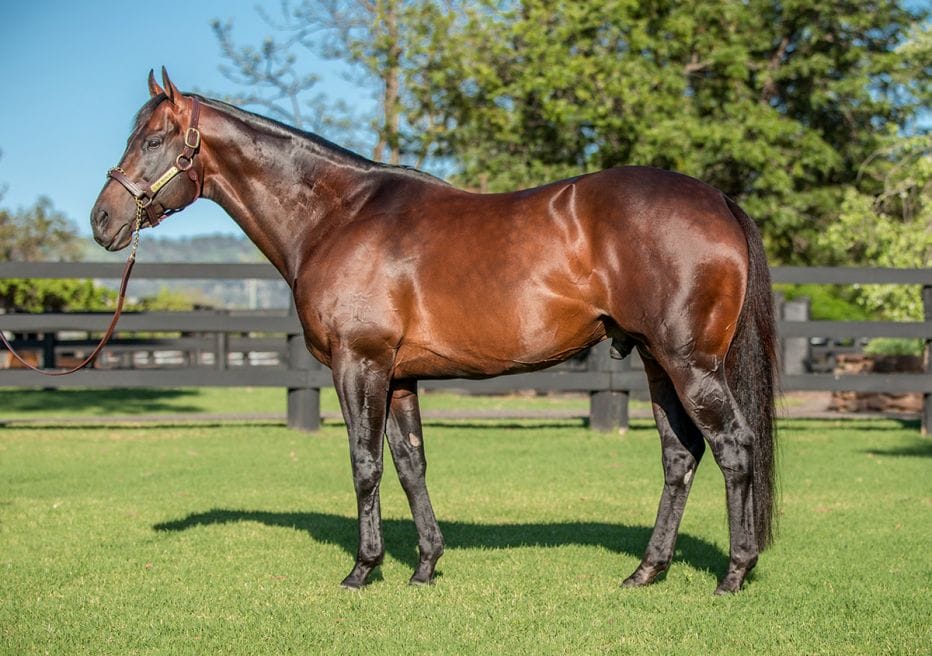
From day one, practical horse people liked the Mitchells’ new sire. He oozed strength, purpose and quality. Importantly, his first crop of foals looked like him. He was bay-dominant and stamped foals in his own image regardless of mares put to him.
On his killer looks and kind temperament, not to mention a bargain fee of $11,000, he attracted 133 mares in his first year, and more every year since.
For the first three seasons, his progeny’s even quality won admirers. Then they hit the track and showed they had ability as well. Yarraman was off to the races.
The rise of “Vinnie” has become one of the most mesmerising success stories in modern bloodstock. His fee more than doubled to $27,500 in 2015 and rose in big jumps to reach $192,500 (and 228 mares) in 2019, $247,500 in 2020, then broke the $300,000 barrier this season.
At 19, “Vinnie” looks and acts 12. He has a strong libido but is tractable. The Mitchells are paring his book to 150 for the 2023 Spring and plan to taper it gradually to extend his longevity.
They have resisted offers to shuttle their horse. After losing Catbird too young (and the rising star Hinchinbrook to a fractured leg in 2018) they know how precious a good stallion is.
For the brothers, success has not altered the work habits of a lifetime. Apart from weekly golf, they work alongside their 30 staff members. But they mind Colin Hayes’ dictum that the future belongs to those who plan for it.
Already among the skilled hands at Yarraman are two younger Mitchells — Arthur’s daughter Lucy has a senior full-time role, and Harry’s daughter Willa, a polished eventing rider, is a hands-on horsewoman.
As to the future, Bill’s son James is already a seasoned bloodstock agent with his father. A recent Spring of 2023 wedding at the stud bodes extra well. That’s when Arthur’s daughter Maddy married bloodstock agent Will Johnson, bringing together two great racing families. Will’s great grandfather Walter Johnson was one of the three brothers who bred and raced the incomparable Vain. Will, like his cousin-in-law James Mitchell, has worked overseas with the best bloodstock people before honing his eye nearer to home.
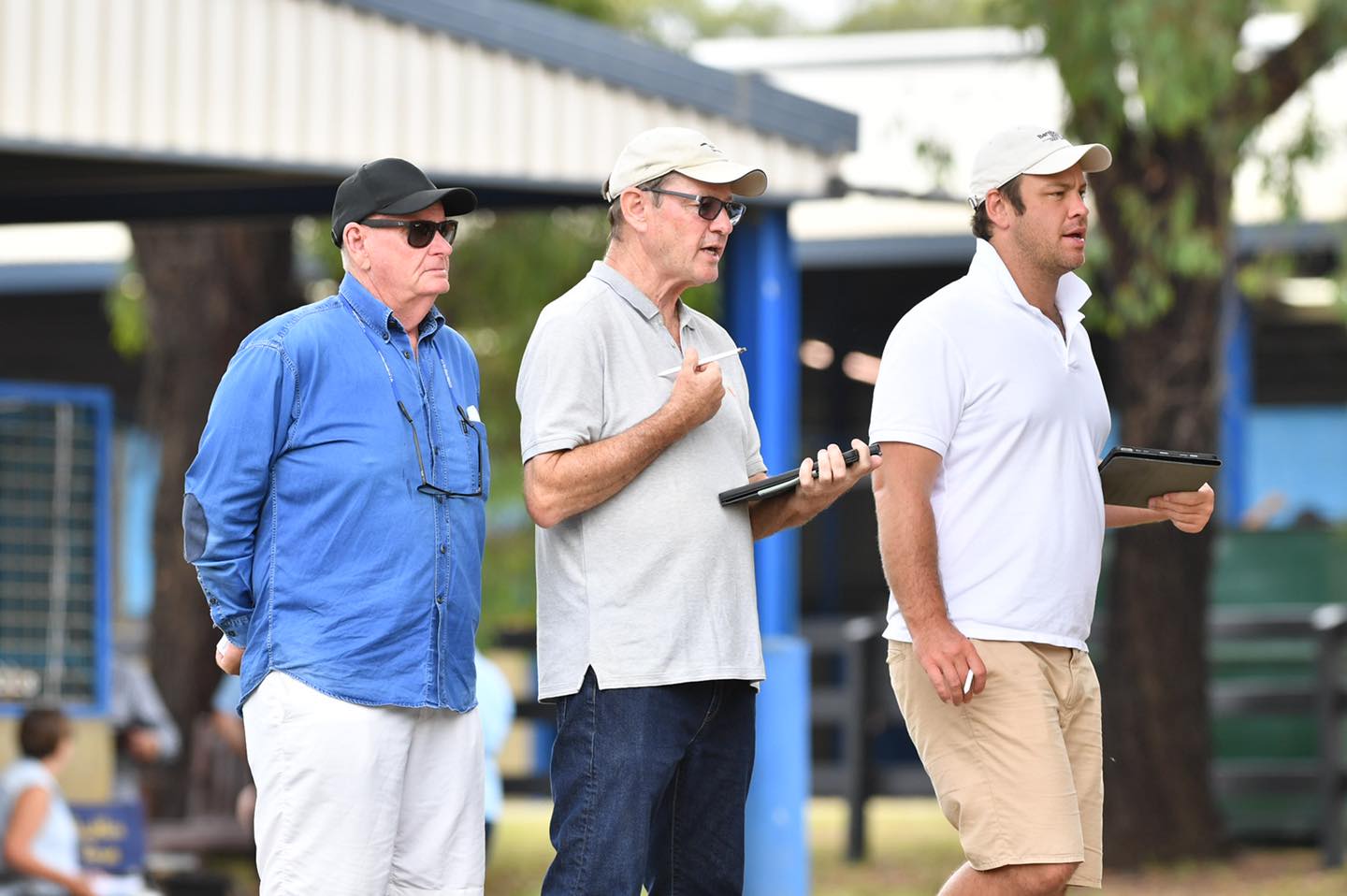
Between them all, the rising generation is set to make the Yarraman brand a fixture at the Easter Sale for decades to come.
It’s the same in the stable.
Of Vinnie’s 100 Stakes winners (at time of filing), the brothers have chosen one of his sons and fellow Inglis Classic Yearling Sale graduate Hellbent, who won the G1 William Reid Stakes, to be heir apparent. It seems the apple hasn’t fallen far from the tree — Hellbent is as similar to his sire as horses get, and at a tenth the price.
Also on the roster is Brave Smash, the fastest entire of the Sunday Silence line to stand in Australia.
Last April the three placegetters in the G2 Percy Sykes Stakes were by Hellbent, I Am Invincible and Brave Smash. And the winner, Kristilli, was bred at Yarraman from a Magic Albert mare and sold for $200,000 at the Inglis Classic Yearling Sale.
The Major would have loved it.
This article is from the Inglis 2024 Preview Magazine. Click to read the full publication.

